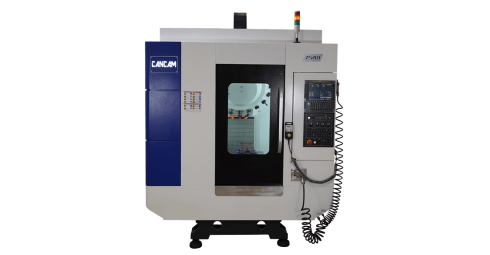How Does a Dust Collection System Work? What You Should Know to Keep Your Workshop Clean and Safe

If you’ve spent any amount of time in a workshop using CNC routers for woodworking, you’ll be more than familiar with the sheer amount of dust and chips that can accumulate. Not only is dust and debris a mess to deal with, but it can also be hazardous to your health and safety. A dust collection system becomes a vital utility in this scenario, offering powerful solutions to keep your work area clean and dust-free. Though you likely know you’ll need a dust collection system for your workshop, you might not quite understand how it works.
At CanCam, we are your top choice when looking for industrial CNC routers for sale and have the expertise you need when looking to start your workshop. We know that dust collection systems are an integral part of any workshop and want to help you understand their importance. Whether you’re wondering do I need a cyclone dust collector or simply want to know a bit more about dust collection systems, we have answers. In this post, we answer the question, how do dust collectors work, and help you make a smart choice for your workshop.
See our post, What Size Dust Collector Do I Need? Your Guide to Choosing the Right Dust Collection System for Your Shop, for more information on finding the right dust collection system for your workspace.
What Are the Components of a Dust Collection System?
Dust collection is not as simple as sucking up sawdust, and when looking to understand how does a dust collector work you’ll need to understand its main components. Dust collection is based on relatively complex principles of physics and air engineering. The primary objective of any dust collection system is to enhance breathable air quality and safety by collecting particles from particulate-laden air and disposing of them safely and without hassle.
A standard dust collection system consists of four main components, including the dust goods, ducting system, dust collector, and the exhausting structure. All of these components work together to remove hazardous dust from the working environment. When looking to understand how does a cyclone dust collection system works it is important to note that it is not just one “thing,” and there are many factors that must be considered when choosing a dust collection system for your space.
What Happens When a Dust Collector is In Use?
If you are looking for a deeper understanding of how a cyclone dust collector works, you’ll want to explore how the system functions when in use. When in use, a dust collection system kicks into action, starting with the dust hoods that use the power of the connected vacuum to capture the sawdust and wood shavings right at the source. These particles are then sucked through the ductwork down into the dust collector itself.
At this point, the dust collector works by creating a high velocity, the power of your dust collector’s motor will impact the velocity. The high velocity coupled with volume causes the dust, chips or other waste to move through the system until it reaches the collector. Here, the velocity is decreased, allowing gravity and inertia to separate the heavier wood particles and dust from the air stream. The particles fall into a waste bin for disposal, while the now-clean air is either recycled back into the workspace or exhausted outside, depending on the system. Dust collection systems are essential to creating a safe and clean workspace, and getting the components of your system right can go a long way to improving the productivity of your space.
How Can You Choose a Dust Collection System That Meets Your Needs?
Implementing a dust collection system in your woodworking space is a smart move that can safeguard both your health and the quality of your work. If you are looking to add a dust collection system to your workshop, contacting a reputable retailer is a smart move. At CanCam, we would be pleased to discuss the needs of your workshop to help ensure your dust collection system meets your unique operational requirements.










